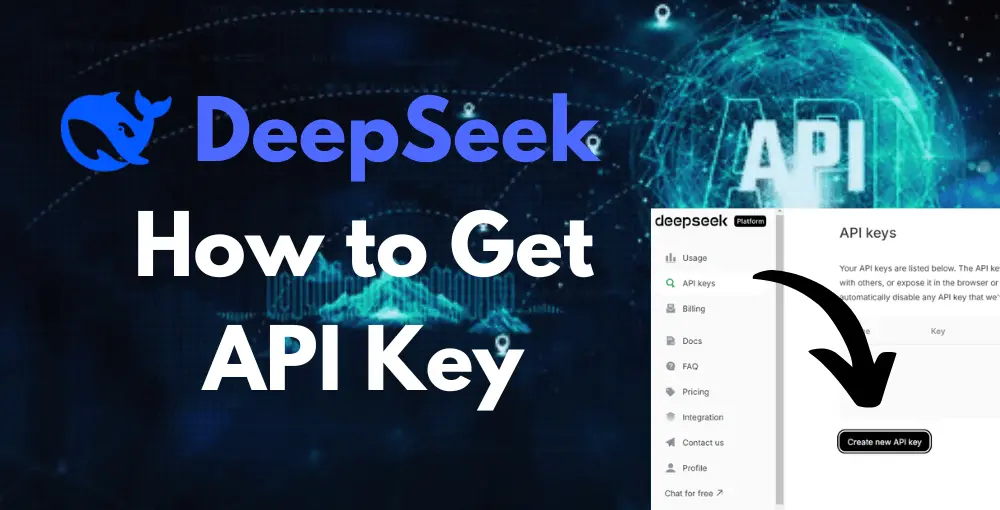How to Get a DeepSeek API Key: Fast Registration Guide
Discover the quickest way to register for a DeepSeek API key. Learn essential steps and avoid common pitfalls for a successful setup and streamlined access.

How to Get a DeepSeek API Key
Getting started with the DeepSeek API is a straightforward process that gives you access to a wide range of powerful AI capabilities. Whether you're working on a small personal project or building a production-grade application, everything begins with registering and generating your API key. To do this, head over to the DeepSeek website, create an account, and once you're inside the developer dashboard, you'll find an option under API Settings to generate a new API key. It only takes a click, and your unique token will be displayed—be sure to store it somewhere safe, since you won't be able to see it again after closing the window.
DeepSeek supports both free and paid access tiers. If you're just experimenting or building a prototype, a free key will likely meet your needs. For a comparison of free and paid plans, see DeepSeek API Free Tiers or DeepSeek API Pricing Guide. It offers access to core features but comes with usage caps, which are clearly outlined in the dashboard. Paid plans, on the other hand, are designed for higher throughput, premium support, and priority access to new endpoints. You'll find the pricing and rate limits explained in more detail in the official documentation.
When setting things up, there are a few common pitfalls worth avoiding. Always double-check your email address during registration, as a verification step is required before you can proceed. Some users also encounter issues with spam filters blocking confirmation emails—so it's worth checking your junk folder if you don't see anything right away. In some cases, for added security, DeepSeek may require you to whitelist your server IP before you can make calls from it, so keep that in mind if your requests are being rejected.
Best Practices After Getting a DeepSeek API Key
Once you have your key, it's a good idea to run a quick test to confirm everything is functioning properly. You can do this using a tool like Postman or directly from the command line. For example:
curl -H "Authorization: Bearer YOUR_API_KEY" https://api.deepseek.com/v1/test
A successful request should return a 200 OK response, along with some basic metadata about your account or the endpoint. This validates that the key is active and your credentials are correctly configured.
Securing your API key is essential. Avoid hardcoding it into scripts or public repositories. Instead, use environment variables or encrypted secrets management systems like .env files, AWS Secrets Manager, or GitHub Actions secrets. In Python, a common practice looks like this:
import os
api_key = os.getenv("DEEPSEEK_API_KEY")
You can rotate your API key periodically to mitigate the risk of leaks, especially in production systems or shared environments.
Leveraging the DeepSeek API in Your Project
With everything set up, you're ready to start integrating DeepSeek's endpoints into your applications. The platform supports a growing range of features, from embeddings and multimodal prompts to image and document understanding. For more on endpoints and integration, check out DeepSeek API Endpoints. The documentation includes example payloads and usage tips to help you get started with features most relevant to your use case. If you're building a semantic search tool, for example, you can explore their embedding models. If you're working on a document analysis pipeline, their image input endpoint might be more appropriate.
As you scale, it's worth investing some time in optimizing your requests. Batching multiple inputs, minimizing payload size, and structuring prompts cleanly can improve performance and reduce costs. SDKs and community-supported libraries are also available for many languages—just check their GitHub or community space for updates.
Frequently Asked Questions
You might be wondering if it's okay to share your DeepSeek API key between collaborators. The answer is no—API keys are meant to be private and tied to a single account. If you need to support multiple environments or contributors, look into creating restricted or scoped keys, or at the very least, rotate them frequently and manage them with access controls.
If you ever lose your key or suspect it's been exposed, you can log into your dashboard and immediately revoke the current key. Generating a new one only takes a few seconds, and you can update your codebase or environment configurations accordingly.
For registration issues, technical questions, or general support, DeepSeek offers multiple help channels. You can reach them directly via their contact email at support@deepseek.com, or browse help articles and discussions in their Support Center. There's also an active community forum where developers share tips, best practices, and implementation advice.
By following these steps, you'll not only secure your access but also ensure you're set up for success as you build with DeepSeek. With the API key in place and a solid understanding of the platform's capabilities, you're ready to start experimenting with some of the most advanced AI tooling available today.